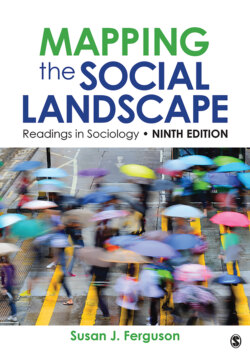Читать книгу Mapping the Social Landscape - Группа авторов - Страница 112
Using Racial Concepts to Control
ОглавлениеThe complex nature of children’s group interactions and their solo behaviors demonstrates that race and ethnicity are salient, substantial aspects of their lives. They understand racial nuances that seem surprisingly sophisticated, including the power of race. How children use this power in their relationships is demonstrated in further episodes….
In another encounter, this time among three children, a White child demonstrates her knowledge of broader race relations, demonstrating her grasp of race-based power inequalities. During play time Debi watches Renee (4: White) pull Ling-mai (3: Asian) and Jocelyn (4.5: White) across the playground in a wagon. Renee tugs away enthusiastically. Suddenly, Renee drops the handle, which falls to the ground, and she stands still, breathing heavily. Ling-mai, eager to continue this game, jumps from the wagon and picks up the handle. As Ling-mai begins to pull, Renee admonishes her, No, no. You can’t pull this wagon. Only White Americans can pull this wagon. Renee has her hands on her hips and frowns at Ling-mai. Ling-mai tries again, and Renee again insists that only “White Americans” are permitted to do this task.
Ling-mai sobs loudly and runs to a teacher, complaining that Renee hurt my feelings. Did you hurt Ling-mai’s feelings? the teacher asks Renee, who nods, not saying a word. I think you should apologize, the teacher continues, because we are all friends here and friends don’t hurt each other’s feelings. Sorry, mutters Renee, looking at Ling-mai, I didn’t do it on purpose. OK, the teacher finishes, can you guys be good friends now? Both girls nod without looking at each other and quickly move away.
This interaction reveals several layers of meaning. Both children recognized the implications of Renee’s harsh words and demands. Renee accurately underscored the point that Ling-mai, the child of Asian international students, was neither White nor American. Her failure to be included in these two groups, according to Renee’s pronouncement, precluded her from being in charge of the wagon. Ling-mai responded, not by openly denying Renee’s statements, but by complaining to the teacher that Renee had hurt her feelings. Both children seem knowledgeable about the structure of the U.S. and global racial hierarchy and accept the superior position accorded to Whites. The four-year-old child exercised authority as a White American and controlled the play with comments and with her stance and facial expressions. Our findings extend previous research on young children’s knowledge of status and power (Corsaro 1979; Damon 1977) by showing that children are aware of the power and authority granted to Whites. The children were not confused about the meanings of these harsh racial words and actions.
